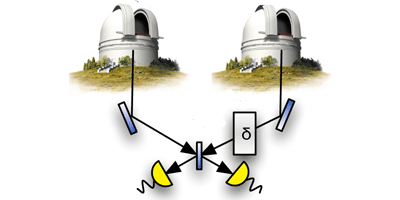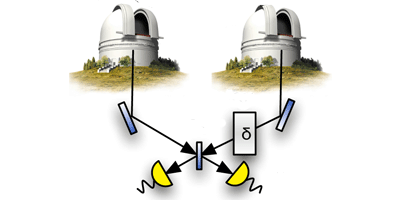Quantum Solution for Telescope Arrays
Large telescope arrays have a high resolving power because light is collected from several telescopes and compared using interferometry techniques. Designing optical and infrared arrays with the telescopes further apart would give astronomers a higher resolution tool with which to image planets outside our solar system and stars with more detail. However, the greater the distance the light has to travel from each telescope to the interferometer, the harder it is to ensure it won’t suffer a phase fluctuation or attenuate along its path, which is what limits current optical and infrared telescope arrays to separations of a few hundred meters.
In Physical Review Letters, Daniel Gottesman at the Perimeter Institute for Theoretical Physics in Canada and his colleagues propose that future designs of telescope arrays might take advantage of quantum tools. They suggest transporting light from the telescopes to the interferometer using quantum repeaters—devices, which can, in principle, use entangled photons to transmit quantum states with great precision over very long distances.
Current quantum repeater technology has been tailored for quantum communication and can’t accommodate the high photon rate and bandwidth of light collected by telescopes. Gottesman et al. have outlined the requirements for using quantum repeaters in telescope interferometers and argue that it is worth developing these quantum devices given the new astronomical insights that larger telescope arrays would permit. – Sami Mitra





